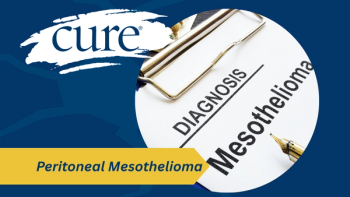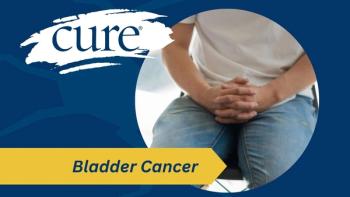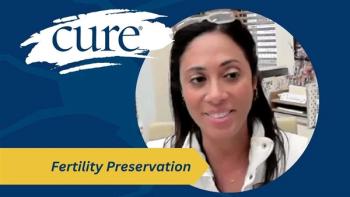
Stem Cell Transplantation Reaches More Populations
Over the years, stem cell transplantation has drastically evolved, not only moving into different types of hematologic malignancies, but also into patient populations of different ethnicities, says Tsiporah B. Shore, M.D.
Over the years, stem cell transplantation has drastically evolved, not only moving into different types of hematologic malignancies, but also into patient populations of different ethnicities, says Tsiporah B. Shore, M.D.
“Living in a very multi-ethnic, multi-racial area like New York and the whole Tri-state area, we have to accommodate the needs of many ethnic and racial groups,” said Shore.
With the addition of novel approaches such as haplo-cord and haploidentical transplants, an increasing number of patients are able to receive this necessary treatment, she adds.
Can you provide an overview of your lecture on stem cell transplantation?
In an interview with CURE, Shore, associate director of the Bone Marrow Transplant Program, Weill Cornell Medicine/NewYork-Presbyterian Hospital, discussed some of these newer advancements related to stem cell transplantation and the challenges with including patients in ethnic populations.I highlighted that stem cell transplantation is a very important procedure that should be available for everyone. Looking at the unrelated registry, or even within families, there are very limited donors for many ethnic populations. We have to do something about that so that transplants are available to those people, even when donors are not available in the registry.
We have come up with different ways to do that in the transplant community. In our center, we pioneered a new method called the haplo-cord transplant. In addition, we do cord transplantations and haploidentical transplantations. Because those options are fairly new and different than what we had five years ago, we're able to find donors for almost everyone.
Can you discuss these newer transplant approaches in more detail?
That is so important—to be able to bring this technology to everyone. We live in a very multi-ethnic world, we have pioneered some of these things, and we have gotten very good at it. We have saved many lives by using these approaches. We work with a very multi-ethnic, multi-racial diverse group of physicians, nurses, and other transplant personnel and we really do pay attention to the ethnic needs of our patients, as well as their medical needs. The one that we pioneered at Weill Cornell Medicine is the haplo-cord protocol. What that means is we combine a haploidentical donor with a cord. What that allows us to do is, with the haplo donor, we are usually able to find a sibling, a parent, or a child that can serve as the haplo donor—because almost everyone has a sibling, a parent, or a child. They will be half of a match. Even when we can’t find that within a family, we can find half of a match in the registry—even when we can’t find a full match.
How do patients typically tolerate stem cell transplantation?
Then, we combine that with a cord. There are many cords around the world, and cords don’t have to be perfectly matched. And, they are easily available. Therefore, we can combine the haplo and the cord. When you combine them in this way, the haplo grows faster than the cord, so the haplo engrafts quickly and allows us to shorten the time to engraftment so patients can get less infections. The cord grows later on, and it is a better match than the haplo, which is half of a match. Then, the cord will eventually take over and the body won’t need the haplo anymore. When we did need it, it was available. That protocol has really done very well in our hands. There are obviously two kinds of stem cell transplant. There is the kind where you use your own stem cells and the one where you use it from some sort of donor. In the presentation, we targeted racial and ethnic minorities, and that is specifically to discuss what happens in the type of transplant where you have a donor compared with your own cells.
When you have a donor, there are many possibilities for problems, from transplant all the way to infections, drug side effects, the period of pancytopenia where you might need transfusions, prophylaxis for various infections and, ultimately, we worry about graft-versus-host disease (GVHD), which is a reaction of the donor cells against the recipient. That can be either acute or chronic.
Our program has eliminated a lot of GVHD by using in vivo T-cell depletion. We have very little chronic GVHD in our program because of that, and we use that for almost all of our allogeneic stem cell transplants; it is some sort of in vivo T-cell depletion. It is pretty standard at our center, and we have not seen problems with relapse rates. One can get slightly more viral infections.
What ongoing research in this area interests you?
Overall, it has been very comparable to using a match-unrelated donor or a matched sibling donor. We are very confident that we can deal with a lot of the complications. Medicine hasn’t found solutions for all of them yet, but we are constantly honing and changing things to improve issues with complications. We have a lot of research at our center. We have investigator-initiated research, multicenter research with the Bone Marrow Transplant Clinical Trials Group, and pharmaceutical research. We all have different approaches. However, we have 5 trials upcoming. Some are ongoing already for acute and chronic GVHD. We have supportive care trials in the area of cytomegalovirus, adenovirus, different fungal infections, Epstein-Barr virus, and cellular therapies for posttransplant lymphoproliferative disorders. We have novel regimens, and an autologous regimen for myeloma, which pairs high-dose Revlimid (lenalidomide) with melphalan. We have the haplo-cord regimen that I discussed, and then we have some trials from the clinical trials network comparing haplos with cords.
What role will transplant have in hematologic malignancies over time?
We have various novel preoperative regimens and other supportive care regimens for trials with defibrotide for prevention of veno-occlusive disease. All in all, we have many trials going on in transplant. We have a full transplant research team with four transplant research coordinators, one and a half research nurses, etc. We are really doing a lot of clinical trials in this area. Transplant is evolving as it always has and that is something that drew me to this field; it is always changing. Cellular therapies are changing as that occurs; transplant moves with that. In lot of the chimeric antigen receptor (CAR) T-cell programs that go on, the transplanters are the ones collecting those cells, infusing them, and monitoring those patients, because we are used to using cellular therapies. There are cellular therapies to treat various viral infections; there are novel regimens and drugs and novel ways of preparing cells that can be utilized.
There are so many things changing in transplant. We have a very large cellular processing lab at our facility that we are also expanding with a Good Manufacturing Practice lab so we can do even more cellular modification therapies. We are involved in a very interesting trial developing stem cells with gene changes in the laboratory so that we can do sickle cell transplants and modify sickle cell patient cells so that they can get their own stem cells back at some point with a changed gene—so that they will no longer be sickles. There are so many things happening in transplant coming down the pike. There will be even more opportunities to do genetic therapy within the context of transplant.





